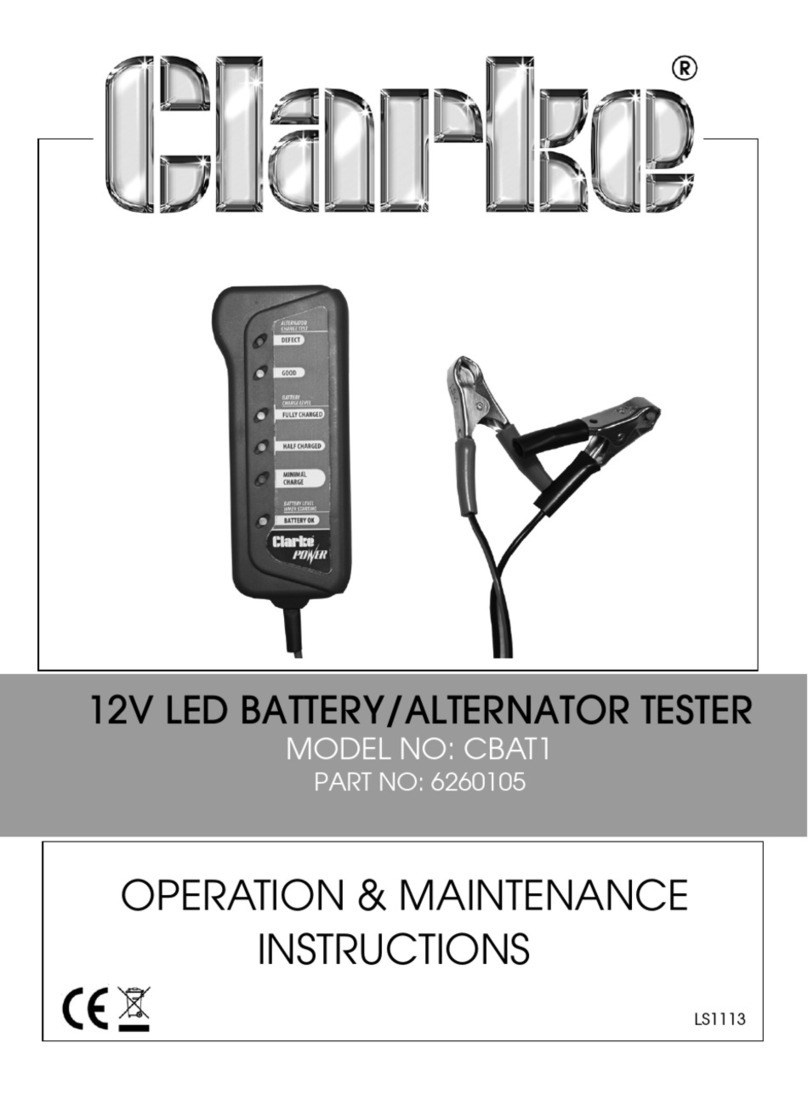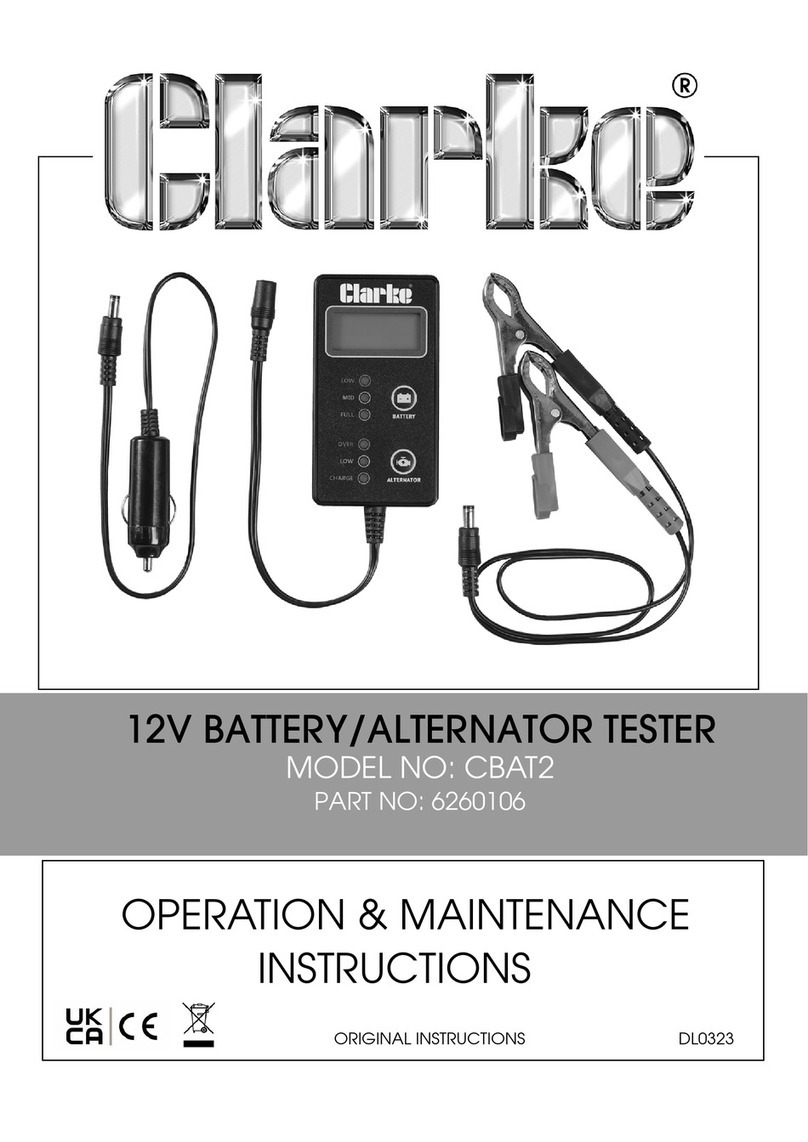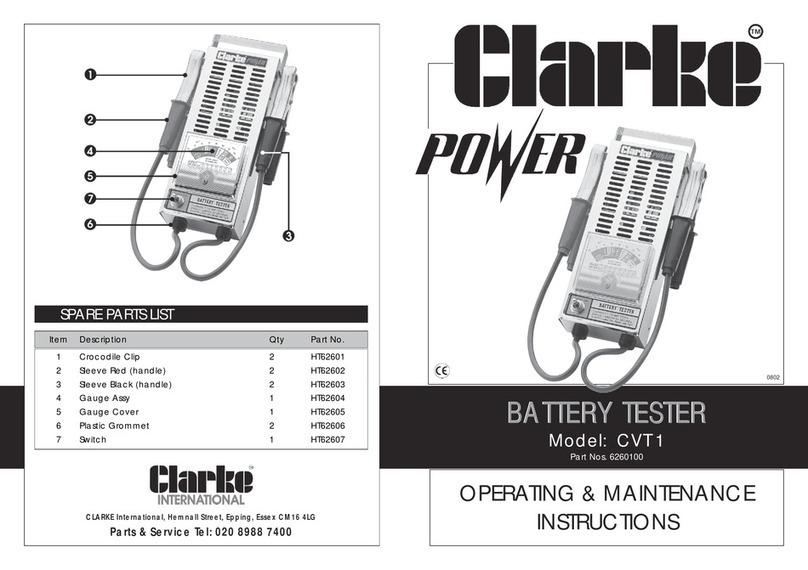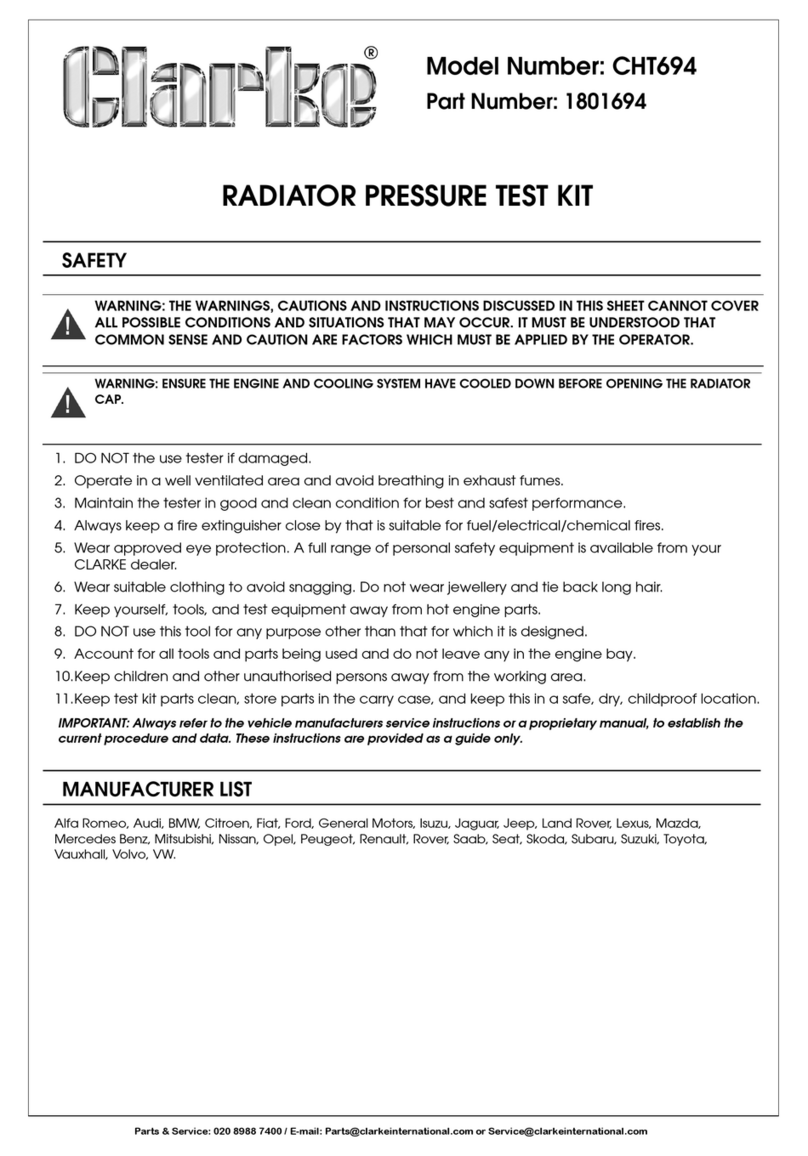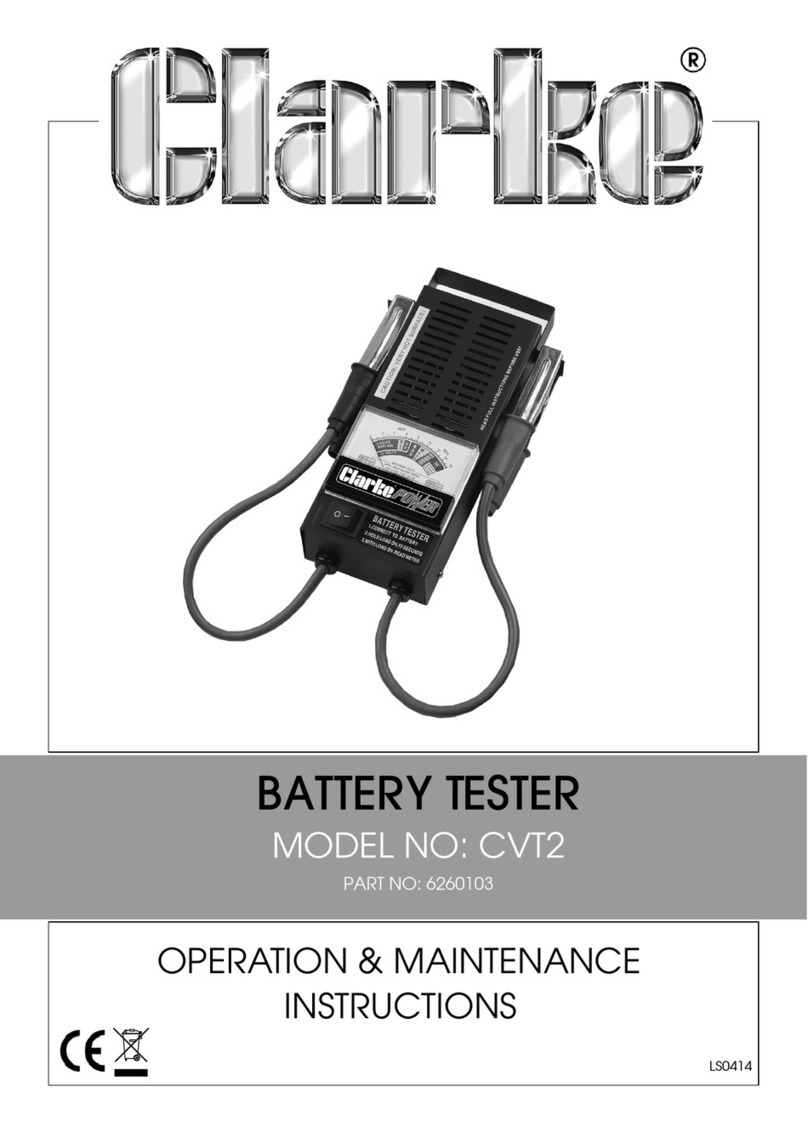
6
Parts & Service: 020 8988 7400 / E-mail: Parts@clarkeinternational.com or Service@clarkeinternational.com
GENERAL INFORMATION
VEHICLE COVERAGE
The OBDII Code Reader is specially designed to work with all OBDII compliant
vehicles, including those equipped with the next-generation protocol --
Control Area Network (CAN). All 2000 and later vehicles are OBDII
compliant and this includes all USA, Asian and European vehicles.
A small number of 1994 and 1995 model year petrol vehicles are OBDII
compliant. To verify if a 1994 or 1995 vehicle is OBDII compliant, check the
Vehicle Emissions Control Information (VECI) Label which is located under the
bonnet or by the radiator of most vehicles. If the vehicle is OBDII compliant, the
label will designate “OBDII Certified”. Additionally, regulations mandate that
all OBDII compliant vehicles must have a “common” sixteen-pin Data Link
Connector (DLC).
For your vehicle to be OBDII, EOBD or JOBD compliant it must have a 16-pin
DLC (Data Link Connector) under the dash and the Vehicle Emission Control
Information Label must state that the vehicle is OBDII compliant.
OBDII COMPLIANT CAR MANUFACTURERS
• European: Alfa Romeo, Audi, BMW, Citroen, Ferrari, Fiat, Jaguar, Iveco,
Lamborghini, Lancia, Lotus, Land Rover, MAN, Maserati, Mercedes-Benz,
Mini, Peugeot, Porche, Renault, Rover, Opel/Vauxhall, Saab, Scania,
Seat, Skoda, VW, Volvo, Smart.
• Asian: Daewoo, Daihatsu, Honda, Hyundia, Isuzu, Kia, Lexus, Mazda,
Mitsubishi, Nissan, Ssangyong, Subaru, Suzuki, Toyota.
• USA: Buick, Cadillac, Chevrolet, Chrysler/Jeep, Dodge, Ford, GM,
Pontiac.
DIAGNOSTIC TROUBLE CODES (DTC)
OBDII Diagnostic Trouble Codes are stored by the on-board computer
diagnostic system in response to a problem found in the vehicle. These codes
identify a particular problem area and are intended to provide you with a
guide as to where a fault might be occurring within a vehicle. OBDII Diagnostic
Trouble Codes consist of a five-digit alphanumeric code. The first character, a
letter, identifies which control system sets the code. The other four characters,
all numbers, provide additional information on where the DTC originated and
the operating conditions that caused it to set. Here is an example to illustrate
the structure of the digits:












